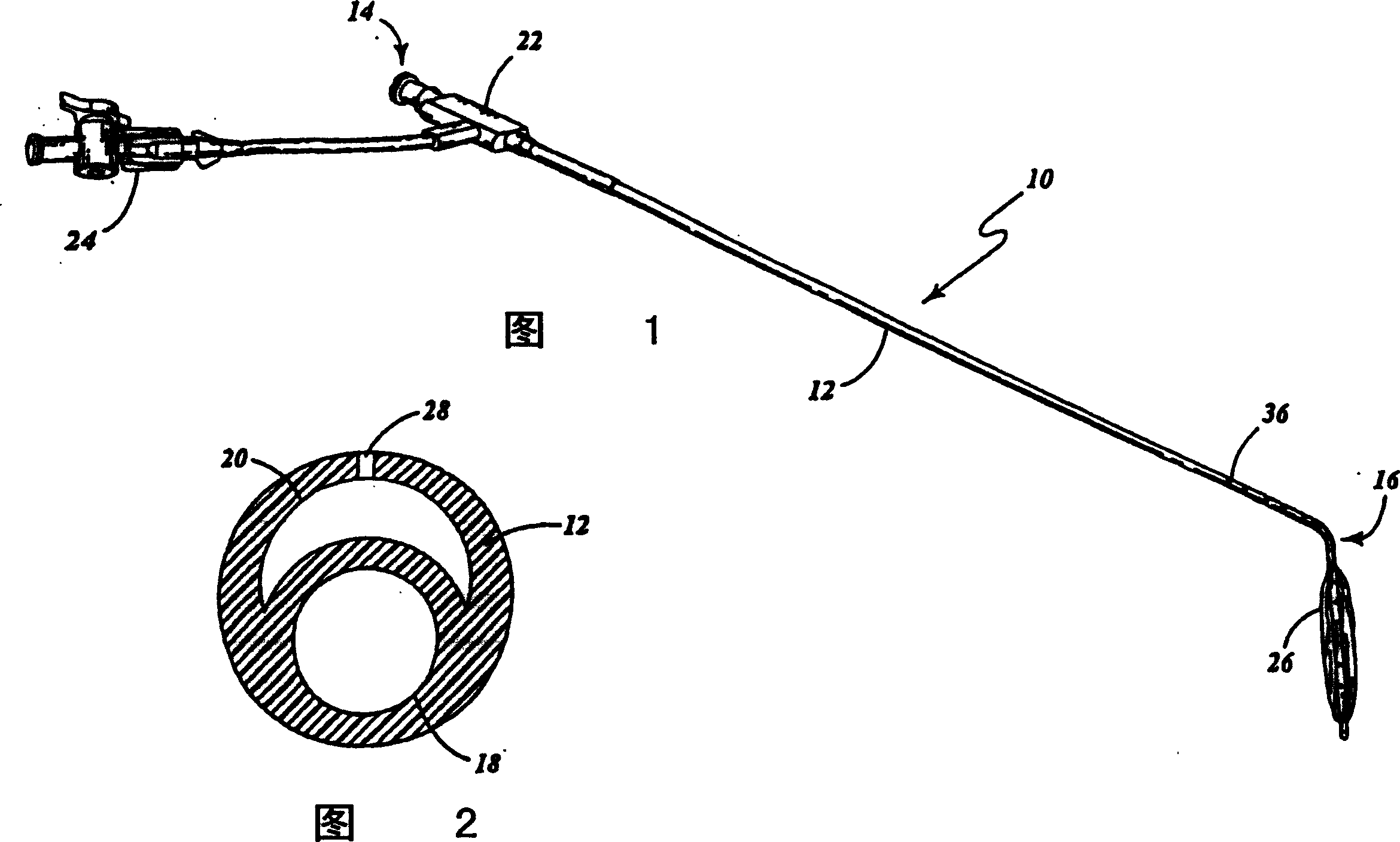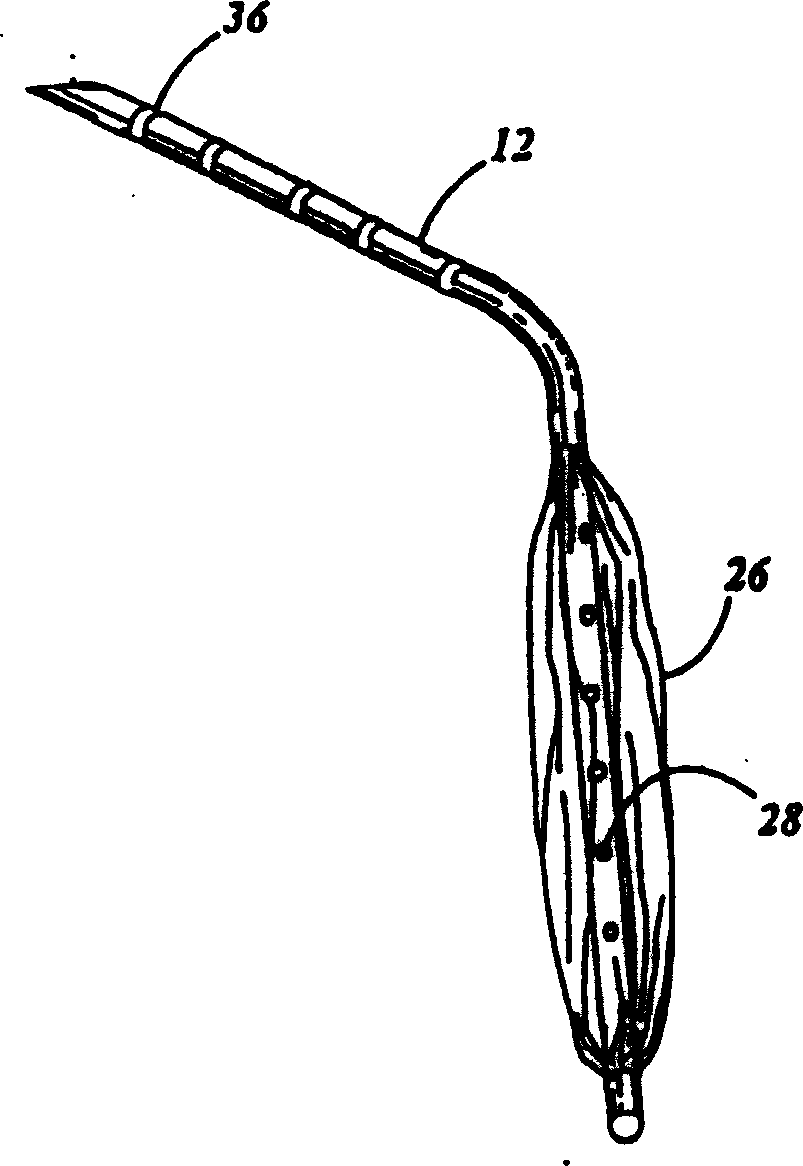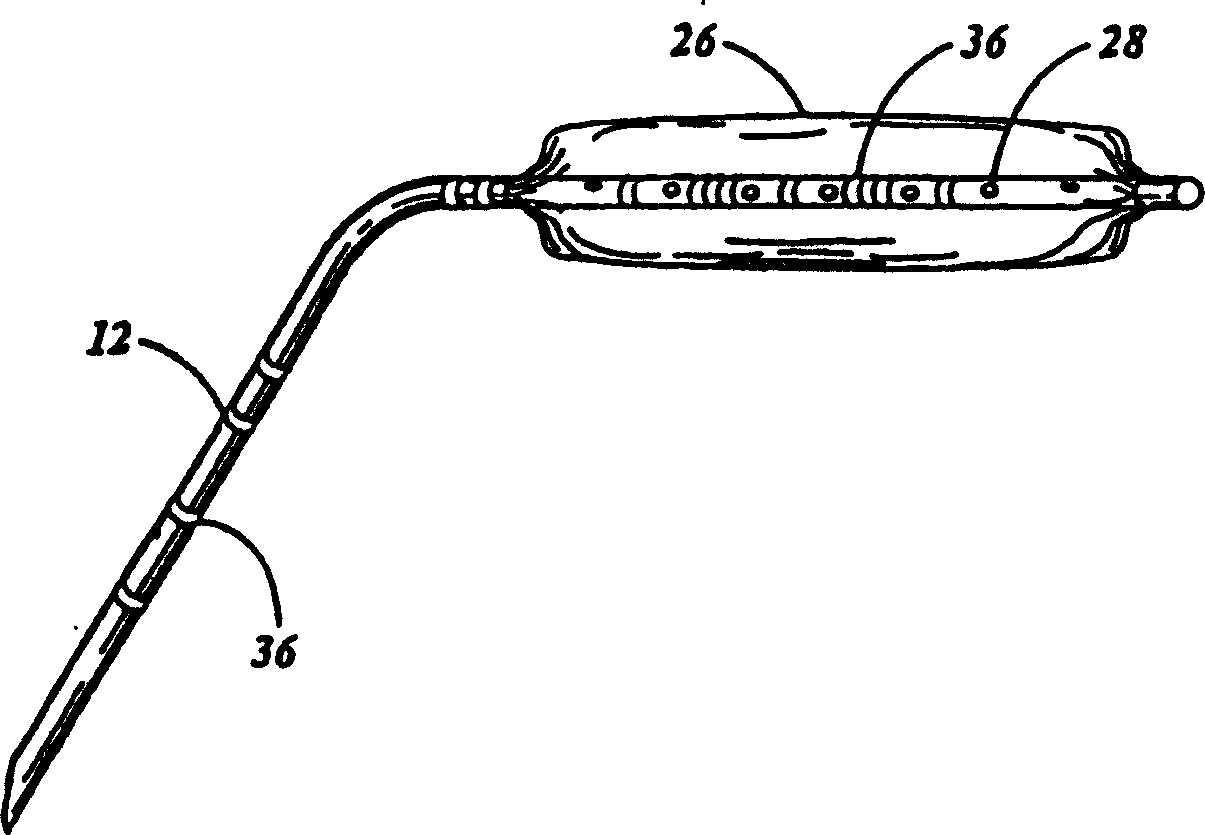Sizing catheter for measuring septal defects
A technique for measuring catheters and lumens, applied in the direction of catheters, balloon catheters, diagnostic recording/measurement, etc., can solve problems such as non-tightness of devices, increased risk of embolism and residual shunt
- Summary
- Abstract
- Description
- Claims
- Application Information
AI Technical Summary
Problems solved by technology
Method used
Image
Examples
Embodiment Construction
[0025] Detailed description of preferred examples
[0026] Referring firstly to FIG. 1 , a measuring catheter 10 for measuring the size of a channel, an opening or a defect is shown. Measuring catheter 10 includes: a tubular rod 12 having a longitudinal axis extending between a proximal end 14 and a distal end 16, the longitudinal axis including first and second lumens 18 and 20 formed therein . The proximal end includes a guide wire adapter 22 and a pressure valve assembly 24 coupled thereto. Without limitation, in the preferred embodiment, first lumen 18 is adapted to receive a guiding wire (not shown) therein. Formed in the tubular rod 12 is a second cavity 20 extending from the proximal end 14 of the tubular rod 12 to less than the distal end 16 and finally a series of holes 28 extending from the cavity 20 through the tubular rod 12 to the tubular rod 12 appearance (see Figure 2). An elongated bundle of expanding bulbs 26 is secured to the tubu...
PUM
 Login to View More
Login to View More Abstract
Description
Claims
Application Information
 Login to View More
Login to View More - R&D
- Intellectual Property
- Life Sciences
- Materials
- Tech Scout
- Unparalleled Data Quality
- Higher Quality Content
- 60% Fewer Hallucinations
Browse by: Latest US Patents, China's latest patents, Technical Efficacy Thesaurus, Application Domain, Technology Topic, Popular Technical Reports.
© 2025 PatSnap. All rights reserved.Legal|Privacy policy|Modern Slavery Act Transparency Statement|Sitemap|About US| Contact US: help@patsnap.com



